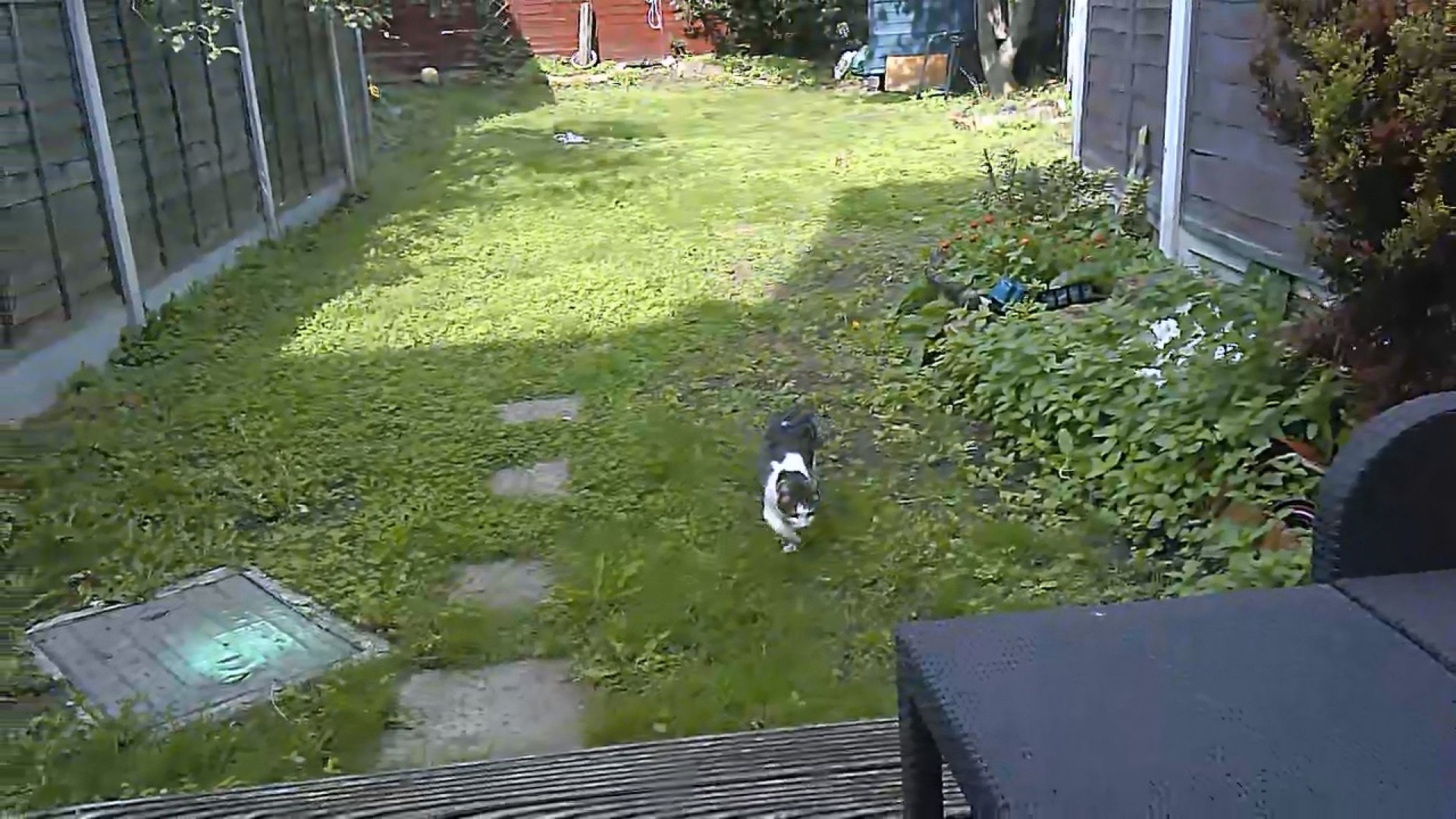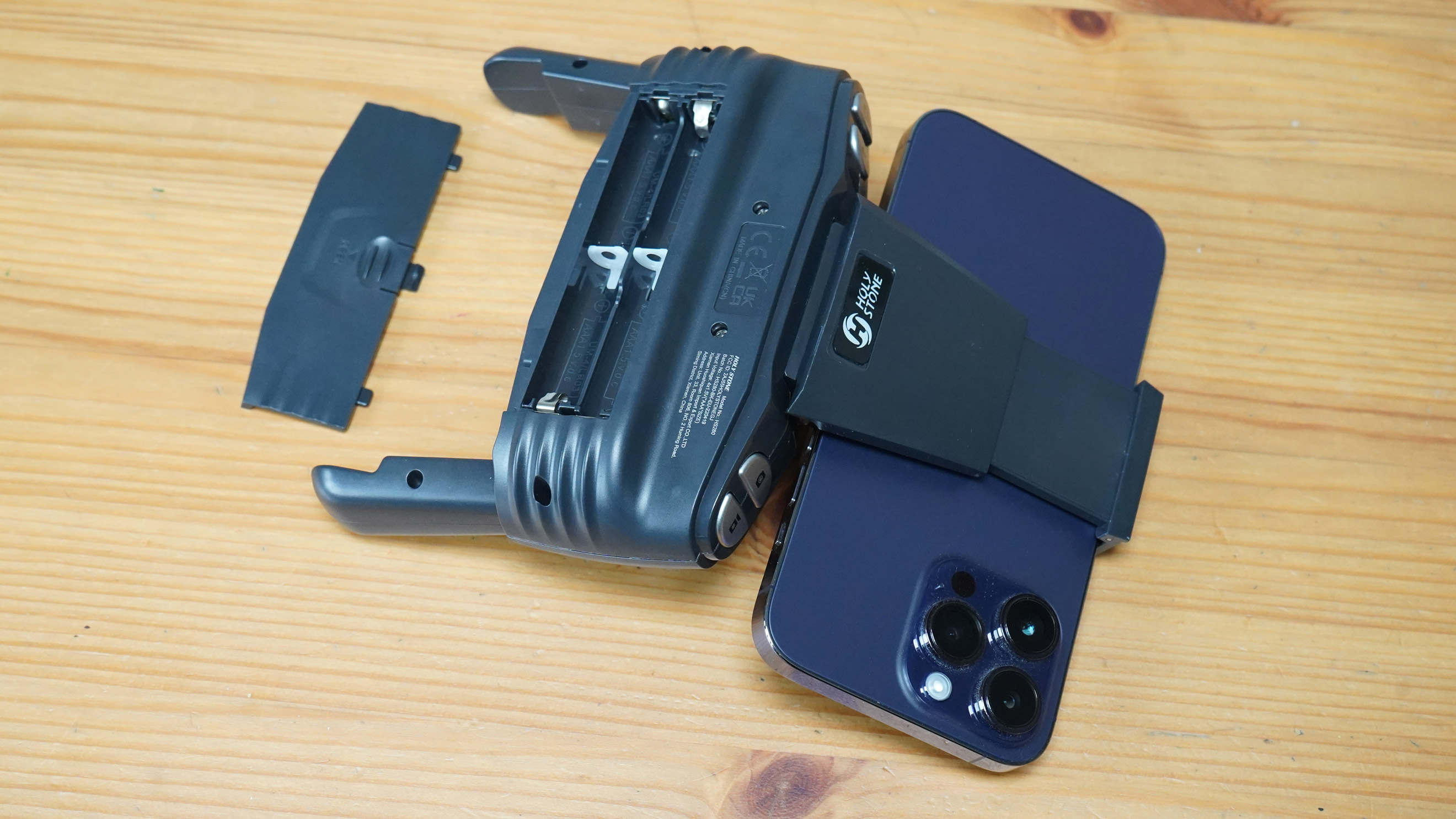Digital Camera World Verdict
We’re not quite sure who this drone is for; it’s bigger and heavier than some toys, making it riskier indoors, but seemingly too light for outdoor flight (save for very wind-free days). Nevertheless it looks better than many competitors and sports a powered camera tilt, features an apprentice aerial photographer would appreciate, if they had the patience and space to practice.
Pros
- +
Good-looking design
- +
Remotely controlled camera tilt
- +
Robust airframe
- +
Two batteries supplied
- +
Takes familiar toy controls to a camera drone
Cons
- -
Flight time realistically only 10mins
- -
Drone easily influenced by wind
- -
Range limited by direct wi-fi control
- -
Camera shake
- -
No card slot to record on-board
Why you can trust Digital Camera World
When it comes to budget drones, Holy Stone produces many offerings across a range of categories. So many, in fact, that it is difficult to compare them with the conventions laid down by other manufacturers. For example, Holy Stone’s idea of a ‘mini’ drone is around 30g, while DJI or Autel would include anything that scraped in under the 250g registration limit.
The HS280 is another example of that indifference to industry orthodoxy. It is not built to cram all that can be fitted into a regulation weight limit, but is simply called a ‘beginner drone' by Holy Stone. At 151g (5.3oz) it does fit more than comfortably inside the ‘no registration’ rule, but nevertheless manages a camera and – in theory – can be used outdoors.
Simply having a camera is not a given in the beginner market, so any assessment of quality will be made bearing that in mind. The question really is that – at this price – will this be a fun or frustrating experience for anyone getting their wings?
What’s in the box?
We’ll rip this Band Aid off straight away: we’ve reviewed several Holy Stone drones and the bigger ones have included gorgeous travel cases (see HS720E). Sadly that wasn’t the case here. Instead, we find molded clear plastic housings containing the drone, the controller, a manual, a battery warning, and a cardboard mystery box.
OK, not really a mystery – it was just the other accessories too small or messy to leave loose in the packaging; spare propellors, tiny screws and screwdriver to attach them, the additional battery and the charger. That’s right, there are two batteires. The charger – a small USB connector – can handle one at a time, and a full charge takes 70 minutes.
Design and build
The HS280 manages to make a good and a bad impression all at once. The sleek white design is gorgeous, with a gloss white plastic top which has enough flex to serve as a power button. To the sides are the folding legs which are reminiscent of a more svelte DJI Spark. It unfolds to an impressive 329 x 210 x 53mm. So far, so good.
Then, as we lifted it from the plastic case, we spotted that the lower propellors seemed to stick out, so we tried to press them in. Instead their arms hinged outward slightly; they don’t tuck into the body when folded. This does feel a bit inelegant (not to mention risky for a product that ships without a dedicated case. Not a fatal flaw, certainly, but a shame.
The best camera deals, reviews, product advice, and unmissable photography news, direct to your inbox!
The drone has a slot at the back for a battery and, sensibly, this ships with an insulation block which needs removing. The underside reveals no sensors whatsoever – there is no optical flow or GPS, meaning there isn’t the capability for the drone to hover in place.

Photographers might also be surprised that, despite the camera, there is no MicroSD card slot; recording is made over the wi-fi connection which means any interference (expected in flight) is recorded too.
What there is, however, is a powered tilting mechanism. The camera isn’t mounted on a gimbal, so won’t be silky smooth – that just doesn’t happen at this price level – but the pilot can tilt the camera down 90˚, offering a good bit of visual flexibility.
Controller
The controller isn’t as elegant as the drone it’s ships with – it’s an angular design which has been included with other Holy Stone models (like the HS175). The styling doesn’t match, but the sticks (which can’t be unscrewed) seem robust. Thanks to fold-out arms, it can be gripped by big and small hands alike.
The phone grip – though very light – was able to grip an iPhone 14 Pro Max without issue. That said a little more protective rubber would be nice – good thing there is room for a phone case too.
The radio tech is 2.4GHz wi-fi, which gives the drone a range of about 100m (300ft), though in truth sticking within half that is a good idea to maintain control.
We don’t love the fact the controller requires four AAA batteries, rather than being rechargeable as those from DJI or Autel are. There is, however, a physical ‘on/off’ click in the power push-switch so we can be sure power isn’t leaking when the device isn’t in use.
Flight characteristics

We test a lot of drones that are capable of holding their own position thanks to GPS, but that isn’t the case here. That’s actually a great way to get better at flying as you can’t take your fingers from the sticks. By default these are set to the widely used ‘Mode 2’.
Like other drones, there is a theoretical solution; adjusting the trim. That can be achieved by pressing on the left stick and then nudging the right stick to counter the drift. We didn’t have a great deal of success with this, but we were able to keep the drone under control by simply never letting go.
When we tested in an open space with low wind the drone took off and kept drifting away. In so far as there was a solution, we switched to the faster mode (physical button or on-screen) which gave enough power to counter the wind. We’ve had the same issue with other Holy Stone drones – ultimately it is a feature issue and you just need to know that you’ll need to react fast.

Here, at least, the build seems robust. The propellors will simply slice a leaf and keep turning, and can also survive hitting something more solid, like a fence or a washing line. We know this admittedly because the drone is so light that, even when leaves barely move, the drone seems to shift course a lot.
Holy Stone HS280: Photos

Images are recorded at 1920x1080 and come in at around 250kb. Photos caught in flight or otherwise have the same quality limitations as the video, but it also should be said that camera does an excellent job of rendering colors. It also seems to have a better handle on white balance and exposure than might be expected. It is only detail where the compression artifacts are winning; even then there is texture of a sort.
As is frequently the case in this market, much is made in the promotional materials of next-to-useless features like V-for-Victory photo capture. As we mentioned, the drone’s drift means you probably shouldn’t use this for selfies (you need to release the sticks), and if you’re flying the drone you’ll have the shutter button at your finger. Still, it’s there if you want it.
Holy Stone HS280: Video
Video sample: This clip shows 30 seconds keeping the drone in a windless but narrow garden trying to avoid the washing lines and fences.
Video recorded by the drone gives a good impression of the flight experience, not least because the camera moves with each control movement (the drone works by leaning in the direction it is sent). The camera support has limited cushioning effect and no digital image stabilization.
That said, there is a high level of compression (1080P is recorded at about 13Mbps) and the artifacts you’d expect. It could be argued that this has the positive effect of processing out judder, but you’ll still feel every bit of flight control – and the line scanning is very evident in a fast turn. We also had a few glitches – presumably in the wi-fi signal (why most prosumer drones have onboard memory of some kind).
User experience

Getting in the air is a reasonably painless experience thanks to Holy Stone’s thorough perfect-bound manual. We appreciate having something like a checklist written in more-or-less plain English, with clear diagrams, and it is this which makes most initial frustrations go away.
Before each take off a brief sequence of stick waggles are required to establish pairing, recalibrate the gyro and start the props. There isn’t a complicated rotational act to be performed as there is on more sophisticated devices, so all this becomes natural soon.
The app – for iOS or Android – isn’t essential for flying or most controls, though obviously is for both capturing video or stills, as well as live view. It also provides battery feedback (though the drone will simply land if it feels power is low), and offers on-screen controls if preferred.
The app doesn’t have a lot to do but it does it cleanly. If you’ve learned flying on a tiny indoor drone in ‘headless mode’ (which we don’t recommend) you’ll find that is on offer here too.

Verdict
The HS280 isn’t any threat to GPS drones like the DJI Mini SE, but costs less than a third of that machine’s price. For the money its features are competitive and the build is both good-looking and robust.
Where customers need to be cautious is where and when they plan to use the drone. Taking flight outdoors is an exciting prospect – and the machine certainly looks big enough – but even a slight breeze can be an issue. Turn indoors and the larger unguarded propellors have the potential to cause harm.
We think Holy Stone’s website is right to suggest that kids 13 and up (14 and up according to the box) would have the right level of patience and ability. Plus a phone, of course! The total flight time of, realistically, 20 minutes from 2 batteries may be a little disappointing, but that’s still a lot of time to concentrate on flying.
Sure, it is no photographer’s dream, but (where conditions permit) everyone should enjoy flying with the HS280, and if you can fly this steadily you’ll have no problem taking the next step.
- Read more:
- Best accessories for your drone
- The best drones for beginners
- Best camera drones
- Best drones for kids
- Best underwater drones
- 12 things you need to make money from a drone
- The best camera insurance for photographers
- The best camera backpacks

With over 20 years of expertise as a tech journalist, Adam brings a wealth of knowledge across a vast number of product categories, including timelapse cameras, home security cameras, NVR cameras, photography books, webcams, 3D printers and 3D scanners, borescopes, radar detectors… and, above all, drones.
Adam is our resident expert on all aspects of camera drones and drone photography, from buying guides on the best choices for aerial photographers of all ability levels to the latest rules and regulations on piloting drones.
He is the author of a number of books including The Complete Guide to Drones, The Smart Smart Home Handbook, 101 Tips for DSLR Video and The Drone Pilot's Handbook.





